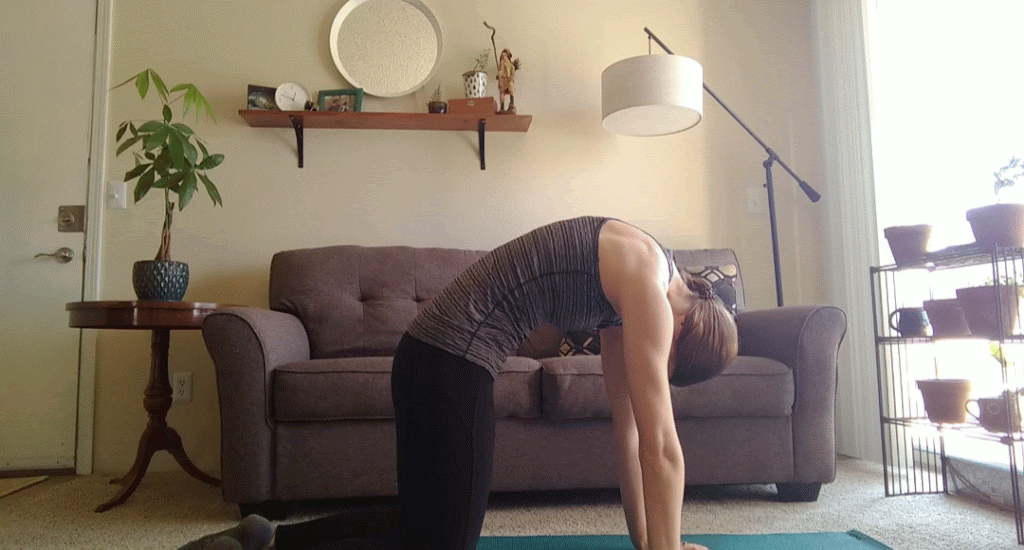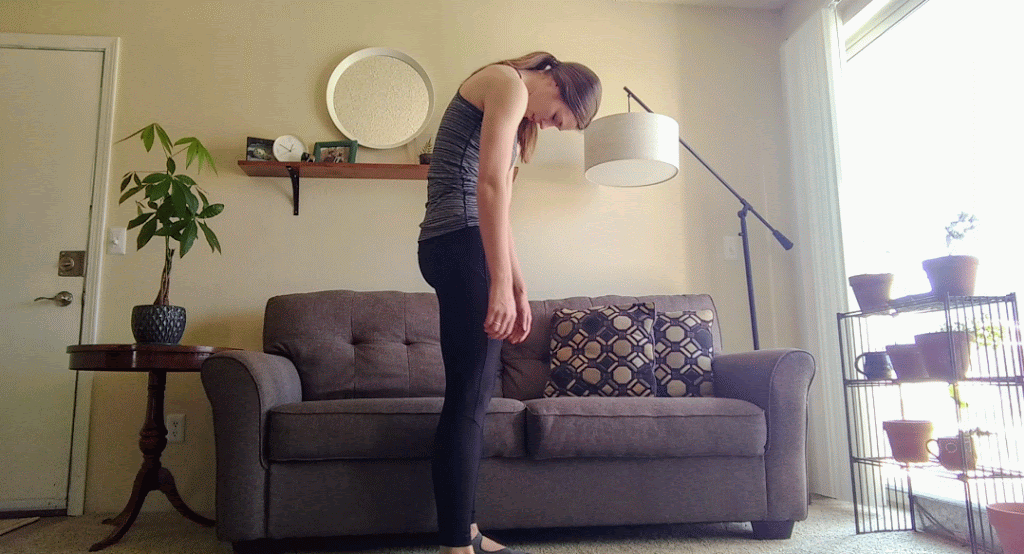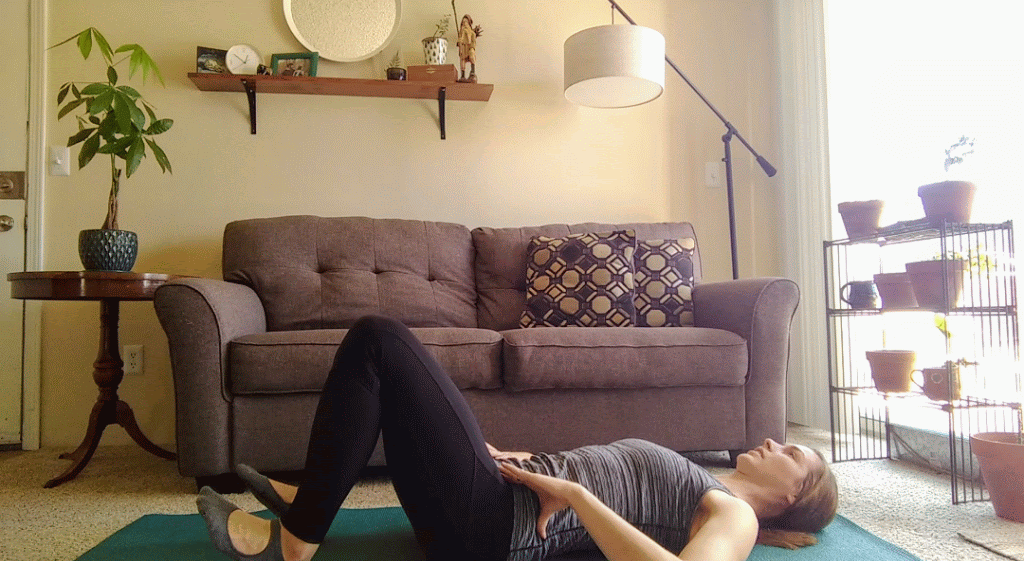
Experiencing lower back pain, especially after transitioning to long hours of sitting at home? Whether it’s a recent issue or a long-standing discomfort, lower back pain is common.
The good news?
Pilates can often provide significant relief, if not complete resolution, for most cases of lower back pain.
Nagging back pain can come at any age, and far too many of us are familiar with it. 8 out of 10 Americans will experience an episode of lower back pain at some point in their lives.
It is one of the most common reasons for missed work and back pain sufferers are spending an average of nearly $3,000 a year in the U.S. on top of other medical expenses to try to combat it… and most of the time, they aren’t getting any relief.
The good news is that most lower back pain isn’t caused by a serious medical condition but by everyday habits like poor posture, exercise, or simply sitting too much.
And it can be easily managed by physical therapy and Pilates.
A combination of deep abdominal strengthening, postural awareness, and dynamic stretching exercises makes Pilates extremely effective in the prevention and treatment of lower back pain. However, it is also important to apply the techniques taught in Pilates to your everyday life.
The Pilates exercises below will help you connect with your deep core muscles so they can begin supporting your back again and remove any added strain. To feel a difference, you’ll want to do this routine 3-4 times a week consistently.
IMPORTANT: when dealing with any pain, it is always best to consult a physical therapist to get to the root cause of the problem before starting a program like this on your own.
Remember to go slowly and gently, and always listen to your body—you should never do anything that hurts!
If any of these moves do hurt or you don’t feel like you’re doing them correctly, I suggest you take advantage of our Free Discovery Session. We specialize in back pain and Pilates-based rehab and can help you discover exactly what is causing your pain to help you learn to move correctly.
Cat Cow & Tail Wag

- Begin on your hands and knees. Your hands are directly under your shoulders and your legs are hip-width apart, knees directly under your hips.
- Engage your abdominal muscles to support your spine so that you have a straight line from your ear to your hip. Shoulders should be down away from your ears.
- Inhale.
- Cat: On your exhale, pull your abdominal muscles in and up as you arch your back up like a stretching cat. At the same time, let your head and tailbone drop down toward the floor.
- Take the stretch further by imagining that you are bringing your head and tailbone together… as if you were going to make a big circle out of your body.
- Cow: From cat pose, use an inhale to reverse the curve of the spine.
- Lift your tailbone up the wall behind you and your reach your chest forward and up. Your neck should be a long extension of your spine. Don’t let the head fall back. Be sure to support this move with your abdominals, not collapsing into your low back,
- Imagine that your head and tail are moving so far away from each other that at a certain point the only thing they can do is start to curve up.
- Repeat the exercise – going from cat to cow and back – slowly. Exhale into your cat pose. Inhale into your cow pose.
- Tail Wag: Find a neutral spine again, gazing straight down at the floor between your hands. Lift your right foot toward your seat but keep your knee on the mat.
- Look over your right shoulder at your right foot, shortening the right side of your back while lengthening the left. Then look over your left shoulder at your foot, letting your shoulder press down away from your ear and swiveling your foot side to side. Don’t let your back arch or curve. Switch sides.
The Roll Down

- Begin by standing with your feet hip-width apart and your spine in neutral position. Your feet should be parallel, toes pointing straight forward. Let your arms relax by your sides.Inhale and lengthen your spine as you prepare to move.
- Scoop your abs; you will keep them pulled in throughout the exercise. Exhale and tuck your chin and lengthen the back of your neck. Nod your head forward and let your shoulders drop forward as you start bending your upper back.
- Bend your knees slightly and continue rolling your entire spine forward and down, one vertebra at a time. Roll down as far as you comfortably can go while keeping your neck, head, and shoulders relaxed. Your arms should dangle from your shoulders. Keeping your abs scooped and your body draped forward, inhale and tuck your pelvis slightly.
- Then exhale and reverse the movement, slowly rolling back up, one vertebra at a time. Keep your navel pulled in deeply as you roll your torso back upright. Return to your starting position. Repeat 5-10 times.
Tip: Do this against a wall. If you feel like your back is coming off the wall all together (instead of one vertebra at a time), this is your cue that you need to improve your spinal mobility.
Single Leg Stretch (Prep Exercise)

- Begin by lying on your back with your knees bent and heels just under the knees. Place your hands on your pelvis, checking to make sure it is neutral or parallel to the sky (meaning hip bones and pubic bone are level, and there is a little pocket of air underneath the lower back).
- Exhale, sliding the left heel forward along the floor away from the sitting bone.
- Inhale, sliding the heel back along the floor towards the sitting bone.
- Repeat with the other leg.
- Repeat 8-10 times alternating legs
Tip: Place your fingers on your hip bones. If you feel your hips moving at all during the exercise (tilting forward, dropping down, etc), this is your cue that you need to improve your core stability.
Bridge

- Begin by lying on your back with your knees bent and heels just under the knees or a little farther away. Place your hands on your pelvis making sure it is neutral or parallel to the sky (meaning hip bones and pubic bone on the same level, with a little space in the lumbar spine).
- Bring your arms down by your side. Inhale to prepare and as you exhale flatten your spine pressing evenly into your heels and curling the tailbone off the mat. Continue to peel the spine up one vertebra at a time until the weight is evenly between your shoulder blades.
- Take a breath in at the top and then exhale again as you roll or peel the spine from the top to the bottom releasing the tailbone last so you come back to neutral position.
Caution! Do not peel the spine up so high that you weight your neck.
Swimming

- Lie on your stomach with your forehead resting on a towel roll and your neck long.
- Reach both arms overhead as if you’re being stretched end to end.
- Exhale and reach the left arm and right leg away from the body, allowing them to hover one inch off the mat.
- Lower and repeat on the other side.
- Repeat 6-8 times alternating sides. Minimize any rocking in your pelvis side to side by keeping your shoulders down away from your ears and your low abdominals lifted away from the mat.
- Finish in child’s pose.
Tip: Keep your gaze straight down on the floor, reducing strain in your neck!
Looking for individualized Pilates instruction tailored specifically to YOU and your body?
Apply for a Free 30-minute Pilates taster with a certified Pilates instructor and see if you’re the right fit for what we do. Available in-person or virtually so that we can meet you where you are!
+ view comments . . .